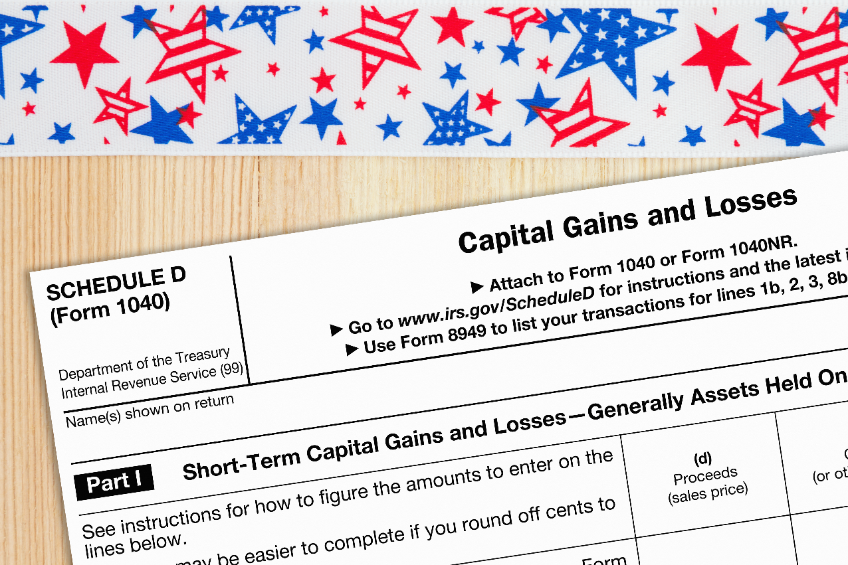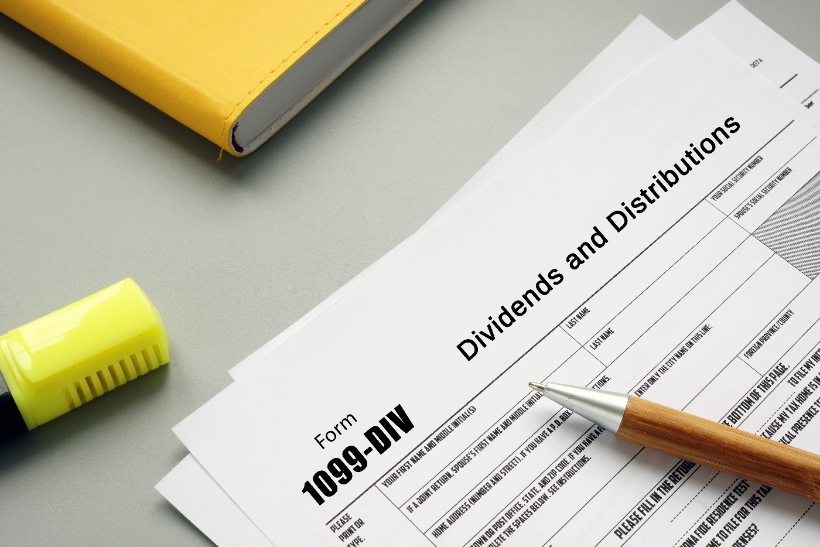Capital Gains Taxes and the Key Inside the 28% Rate Gain Worksheet
Published:
What is the 28% Rate Gain Worksheet?
The capital gains tax is a tax on profits from selling a capital asset. It applies to a range of investments, including stocks, bonds, mutual funds, real estate, and other tangible assets.
When you sell a capital asset, such as stocks, mutual funds, or real estate, and make a profit, you might be required to pay a capital gains tax on that gain. How much? Well, it depends on how long you held the asset and what your taxable income is.
Long-term capital gains tax rates are usually lower than short-term rates, which provides an added incentive for investors to hold their investments for at least a year. The tax benefits of holding an investment for the long term can be significant. For example, if you hold a stock for one year or less, any profit will be subject to short-term capital gains tax rates, which can range from 10% to 37%, depending on your taxable income level. However, if you hold the same stock for more than a year, it will be subject to long-term capital gains tax rates, which may be as low as 0%.
It’s important to note that these rates are subject to change, and it’s always a good idea to consult with a tax professional to determine your specific tax obligations.
Long-Term Capital Gains Tax Rates
Understanding long-term capital gains tax rates is important for investors who want to maximize their investment earnings. Long-term gains are typically taxed at a lower rate than short-term gains, so investors who hold onto their investments for more than a year can potentially save on taxes. However, the specific tax rate that applies to long-term gains depends on several factors, such as the investor’s taxable income level and the type of asset sold.
Overview of Long-Term Capital Gains Tax Rates
Long-term capital gains tax rates are an essential consideration for any investor who wants to maximize their investment returns while minimizing their tax liabilities. These rates are applied to assets held for over a year, and they can vary depending on the taxpayer’s taxable income.
In general, lower long-term capital gains tax rates are applied to encourage investors to hold onto their investments for longer periods, as this can incentivize longer-term thinking and planning. Wealthier taxpayers, though, may pay a higher tax rate of 20% on long-term capital gains to help ensure a reasonable level of tax revenue.
For the 2022 tax year, the federal long-term capital gains tax rates for a married couple filing jointly start at 0% if their taxable income is less than $81,050. At taxable income between $81,050 and $501,600, a 15% tax rate applies. For taxpayers with a taxable income of more than $501,600, the long-term capital gains tax rate becomes 20%.
It’s essential to understand long-term capital gains tax rates as they allow investors to plan and optimize their tax strategies more effectively. Knowing which assets qualify for long-term capital gains benefits and what the tax implications are can also help minimize the tax hit at year-end.
Taxpayers with lower taxable income receive a preferential long-term capital gains tax rate that encourages them to hold onto their investments. Conversely, wealthier taxpayers pay long-term capital gains tax rates at 20%. The 2022 tax year has different income thresholds determining long-term capital gains taxes, including 0% for taxable income below $81,050, 15% for incomes between $81,050 and $501,600, and 20% for taxable income above $501,600.
Factors That Impact Tax Rates on Long-Term Gains
Several factors influence the tax rate on long-term capital gains, including the duration of ownership, type of investment, and income level. The IRS defines long-term investments as assets held for over one year. Suppose you sell these assets at a profit; the resulting capital gain is subject to a tax rate that varies by the duration of ownership and your taxable income.
Cut-off points determine the three long-term capital gains tax rates. The first cut-off point is for taxpayers whose taxable income falls below $81,050. If this applies to you, your long-term capital gains tax rate is 0%. The second cut-off point is between $81,050 and $501,600, with a long-term capital gains tax rate of 15%. The highest tax rate of 20% applies to taxpayers with a taxable income above $501,600. These cut-off points are for the 2022 tax year.
Income level and taxable income are essential factors that influence the tax rate on long-term capital gains. High-income taxpayers face a higher tax rate than those with lower income levels. The primary rationale behind this is that higher-income taxpayers are deemed to be more capable of handling a more significant tax burden, and the government utilizes higher taxes to generate revenue.
Any capital gains from assets held for less than one year get taxed at ordinary income tax rates. These rates vary depending on taxable income and range from 10% to 37%. Therefore, investors may opt to hold onto their assets for a year or more to take advantage of the more favorable long-term capital gains tax rate.
Advantages and Disadvantages of Different Long-Term Tax Rates
Long-term capital gains tax rates are a crucial aspect of any investment strategy. As we mentioned earlier, the tax rate on long-term capital gains varies depending on the duration of ownership, type of investment, and income level. For the 2022 tax year, the tax rate on long-term capital gains ranges from 0% to 20%, with cut-off points at $81,050 and $501,600.
The advantages of long-term capital gains tax rates are many. One of the most significant advantages is the potential for a 0% tax rate for taxpayers with a taxable income below the first cut-off point. This tax benefit is an excellent incentive for low-income taxpayers to invest in long-term assets and reap the benefits of long-term investment.
Another significant advantage of long-term capital gains tax rates is that they provide an opportunity for investors to hold onto their assets for more extended periods. Duration is a well-known factor in successful investments, and investors who are willing to hold onto their assets for longer are more likely to earn higher returns. Long-term capital gains tax rates incentivize investors to take a long-term approach, allowing them to benefit from higher returns while minimizing their tax liabilities.
Despite the advantages, there are also several disadvantages to consider. One of the biggest disadvantages is the potential for higher tax rates for wealthier taxpayers. This is because the highest tax rate of 20% applies to taxpayers with a taxable income above $501,600. This means that a higher-income taxpayer may face a higher tax liability than their lower-income counterparts.
Another disadvantage is that the cut-off points for the long-term capital gains tax rates may change from year to year, which can make planning difficult. Additionally, investors who sell their assets too quickly will miss out on the potential benefits of the long-term capital gains tax rates, as short-term capital gains are subject to ordinary income tax rates.
Investment Income and Capital Assets
Overview of Investment Income and Capital Assets
Different types of investments are subject to specific tax regulations that can significantly impact an investor’s after-tax return. Stocks, bonds, and mutual funds are all subject to different tax rules. For example, qualified dividends receive preferred tax rates and are subject to the same tax rates as long-term capital gains. On the other hand, short-term capital gains receive the same tax treatment as ordinary income.
Real estate and other capital assets are subject to more complex tax rules. Capital assets held for more than one year qualify for long-term capital gains tax rates, while those held for less than a year are subject to short-term capital gains tax rates. Additionally, an investor can claim depreciation deductions on real estate investments, which can lower the taxable income further.
The IRS imposes different tax rates on collectibles, such as precious metals, than they do on other investments. Collectible gains are only eligible for a maximum federal tax rate of 28%, even if an investor falls under a lower tax bracket.
Calculating capital gains and losses is essential to determine an investor’s tax liability accurately. The 28% Rate Gain Worksheet is a tool used to calculate long-term capital gains tax rates when an investor sells qualified assets. The worksheet factors in the cost basis, adjustments, and the sale price to determine the eligible gain subject to capital gains taxes.
Calculating Your Taxable Income with the 28% Rate Gain Worksheet
Calculating your taxable income can be a daunting task, but it doesn’t have to be. By following a few simple steps and utilizing the 28% Rate Gain Worksheet provided by the IRS, you can easily determine your tax liability on long-term capital gains.
Step 1: Determine Your Gross Income for the Year
Gross income includes all money you earned throughout the year from various sources such as wages, salaries, and interest from bank accounts. Add up all these sources of income together to determine your gross income.
Step 2: Account for Any Deductions or Credits You Qualify For
Next, take into account any deductions or credits that you are eligible for, such as charitable contributions and mortgage interest.
Investing in tax-advantaged accounts is a smart strategy because they grow either tax-free or tax-deferred, meaning that you won’t owe taxes on the money you contribute or the investment earnings until you withdraw funds from the account. This can help lower your taxable income and provide substantial tax savings over time.
Another significant advantage of some tax-advantaged accounts is that they allow you to avoid paying capital gains tax. For example, Roth IRAs and 529 accounts offer tax-free withdrawals on qualified distributions. This means that if you have a Roth IRA or 529 account, you may be able to withdraw funds without paying any taxes on the capital gains you’ve earned.
If you’ve invested in assets that have increased in value, you’ll need to report your capital gains or losses to the IRS using Schedule D.
Step 3: Calculate Your Adjusted Gross Income (AGI) Using the 28% Rate Gain Worksheet
Finally, use the 28% Rate Gain Worksheet to calculate your adjusted gross income (AGI), taking into account any long-term capital gains you have incurred throughout the year.
The worksheet helps determine the tax rate on your long-term capital gains. It’s important to note that the 28% rate is the maximum rate on long-term capital gains, which is significantly lower than ordinary income tax rates.
To compute your AGI, start by using the AGI worksheet provided by the IRS. The worksheet helps you calculate your AGI by subtracting specific deductions and exemptions from your gross income. The result is your AGI.
By taking the time to accurately compute your AGI using the 28% Rate Gain Worksheet and other tax tools available, you can properly report your income and avoid paying unnecessary taxes.



